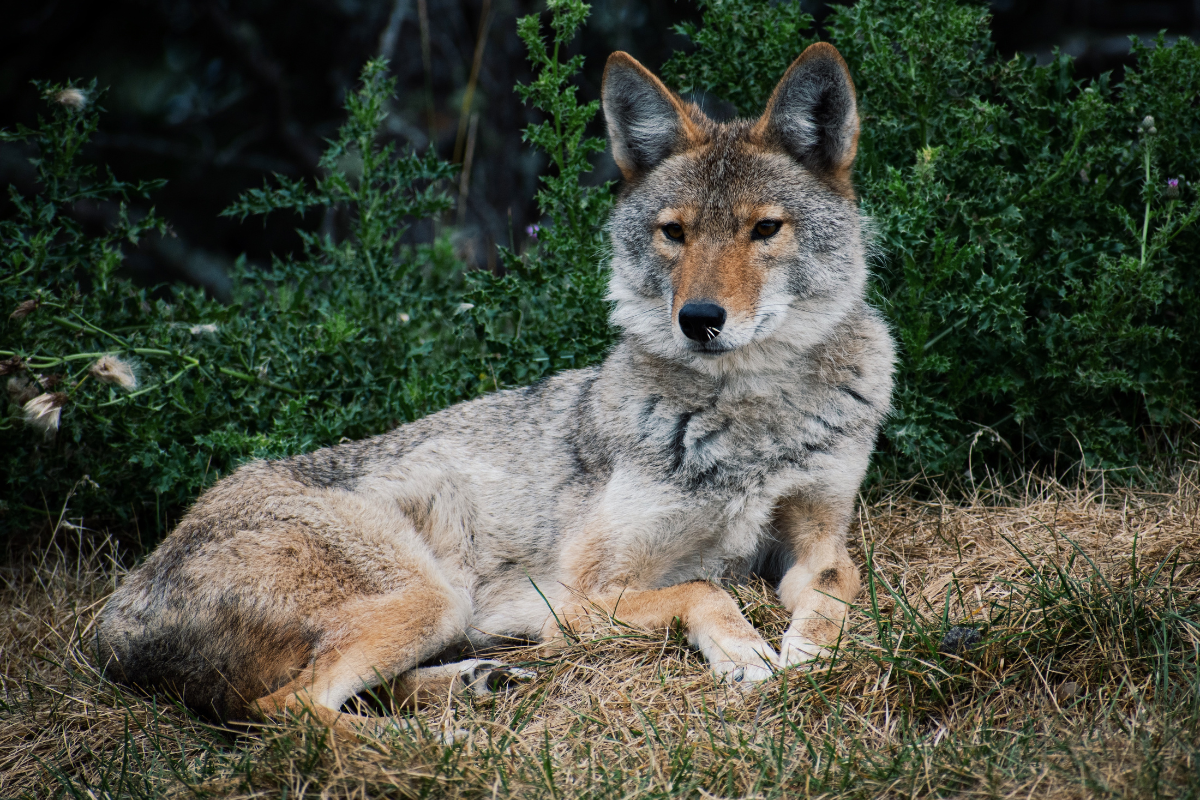by Nicole Rivard
Earlier this summer I was delighted to see a coyote scampering through the land trust property I walk my dog in every day.
I kept a safe distance while heading in his direction to try to get a photo. I was shocked to see a deer emerge from the exact spot where he entered the wooded area from the open meadow. I thought to myself—maybe they were friends since there was no interest in the deer as prey by the coyote.
That enthralled me too.
I shared my excitement with the neighbors who live near the nature preserve, and they shared their own anecdotes about seeing the coyote as well. It was refreshing to learn they appreciated seeing him too.
Too bad you can’t say the same for the people on NextDoor, the private social network for neighborhoods. There people are panic-stricken if they see a coyote and other wildlife who dare to saunter through there yards.
It’s alarming and disappointing. And so was reading an article recently about how Middletown, Rhode Island, is partnering with the U.S. Dept. of Agriculture and is considering killing coyotes. Not only are coyotes beneficial to ecosystems, they should be left alone so they can raise families and have a life too.
Friends of Animals wrote to town officials last week saying we agree with Dr. Numi Mitchell, who told reporters that the best thing Middletown residents can do is “take a breath and look around and see where there are food items that are attracting coyotes. If anyone out there can convince a neighbor or a person they meet, not to tame train the coyotes to come in town, Middletown’s problem will disappear.”
Now that’s sane advice.
Like other wildlife, coyotes are opportunistic feeders. If residents have coyotes near their property, it’s because they can find easily accessible food there (commonly out of garbage cans or dumpsters). The best ways to prevent coyotes and other wildlife from making yards a buffet include:
●Clearing your yard of pet food, berries, fallen fruit, and other food sources
●Watching pets carefully and not leaving them outside alone
● Keeping trash cans secured indoors until pickup time
● Investing in a five-foot woven-wire fence with extenders facing outward at the top. An effective fence also needs to be at least 8 inches below the surface of the lawn or have a galvanized wire apron that extends out from the fence at least 15 to make your yard less coyote accessible.
This needs to be a community-wide effort. If one resident is doing the wrong thing, it will affect the whole neighborhood.
I was relieved to learn that there is an ordinance in Middletown that prohibits the intentional feeding of coyotes and comes with a fine.
FoA explained to officials that the USDA is notorious for its campaigns of annihilation against coyotes—it has been for decades. Once Americans began cattle and sheep ranching on federal public lands, the meat industry declared war on coyotes and has gotten away with it even though they are members of the dog family and Americans consider their dogs family members.
The 1931 Animal Damage Control Act allowed coyotes to be earmarked for total eradication in the United States by USDA’s killing machine, Wildlife Services.
The irony is, coyotes have not only survived, they have thrived and expanded. Clearly, they have more brains than USDA staff.
The coyote’s famous howl allows it to take censuses of surrounding coyote populations and adjust the sizes of their litters accordingly. In the 1920s, coyotes actually began mysteriously showing up in places east of the Mississippi River. The unrelenting pressure on them from USDA triggered larger litters of pups and colonization behavior that pushed them into new settings everywhere on the outer margins of their core range.
Of course, Middletown won’t hear this from USDA. The agency is hoping the town hires it because it’s money in their pocket. Business as usual for them.

